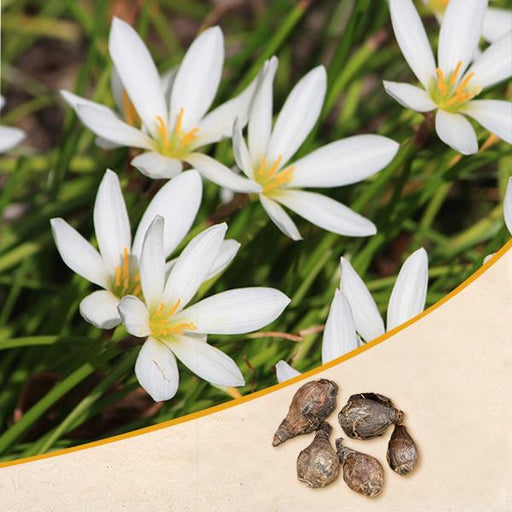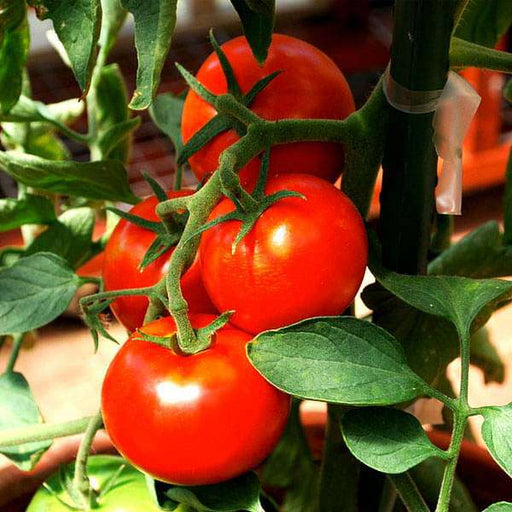Rainy sowing essentials
Embrace the power of rain and learn how to sow flower bulbs during the wet season. With the right techniques and a little patience, you'll be rewarded with a garden that flourishes in the downpour.
Choosing bulbs for wet conditions
Discover the perfect flower bulbs that thrive in damp environments. From Zephyranthes lilies to Camassias, these resilient beauties won't let a little rain get them down.
Rain-friendly planting techniques
Master the art of planting bulbs in wet conditions. Follow these expert tips on proper drainage, soil amendments, and planting depth to ensure a successful rainy sowing season.
Flood-tolerant bulbs
When life gives you rain, plant flood-tolerant bulbs! Learn about the toughest flower bulbs, such as crinums and Louisiana irises, that can withstand heavy downpours and soggy soil.
Rain gardens
Create a stunning and eco-friendly rain garden by planting bulbs that love wet conditions. These gardens not only look amazing but also help manage stormwater runoff in your landscape.
Companion planting for rainy sowing
Enhance your rainy sowing garden with complementary plants that love the wet weather. Pair your bulbs with moisture-loving perennials and shrubs for a lush, thriving garden.
Container gardening in the rain
Don't let limited space or soggy soil get in the way of your rainy sowing dreams. Discover how to grow flower bulbs in containers, even during wet conditions.
Bulb care in wet weather
Keep your bulbs healthy and happy during rainy sowing season with proper care. Learn about the ideal watering, fertilizing, and disease prevention methods to ensure a thriving garden.
Rainy sowing and wildlife
Attract pollinators and other beneficial creatures to your garden by planting bulbs that bloom in wet conditions. Bees, butterflies, and birds will thank you for the feast!
Sustainable rainy sowing practices
Go green by adopting sustainable practices in your rainy sowing garden. Plant native species, conserve water, and use eco-friendly materials to create a garden that's kind to the planet.
Rainy sowing for beginners
New to rainy sowing? Get started with this beginner's guide to planting flower bulbs in wet conditions. With helpful tips and advice, you'll soon be a rainy sowing pro.
Tools for rainy sowing
Equip yourself with the right tools for planting flower bulbs in wet conditions. From bulb planters to moisture meters, these gadgets will make your rainy sowing experience a breeze.
Rainy sowing calendar
Plan your rainy sowing season with this handy calendar, detailing the ideal planting times for various flower bulbs. Stay organized and ahead of the weather for a successful garden.
Waterlogged soil solutions
Tackle waterlogged soil head-on with these expert solutions. Improve drainage, amend the soil, and choose the right bulbs to create a thriving garden despite the challenges.
Rainy sowing success stories
Get inspired by the success stories of fellow gardeners who have mastered the art of rainy sowing. Learn from their experiences and apply their wisdom to your own garden.
Rainy sowing in different climates
Discover how to adapt your rainy sowing techniques for different climates. From tropical downpours to temperate drizzles, there's a rainy sowing strategy for every gardener.
Bulb-swapping communities
Connect with like-minded gardeners and participate in bulb-swapping communities. Share your favorite rainy sowing bulbs, trade tips, and expand your garden's diversity.
Rainy sowing challenges (cont.)
Overcome common challenges faced by gardeners during the rainy sowing season, such as pests, diseases, and nutrient deficiencies. Equip yourself with knowledge and practical solutions to keep your garden thriving despite the obstacles.
Rainy sowing aesthetics
Create a visually stunning garden that flourishes in the rain. Experiment with bulb placement, color schemes, and textures to design a breathtaking landscape that comes alive during wet weather.
Online resources for rainy sowing
Stay informed and connected with valuable online resources dedicated to rainy sowing. From expert blogs to gardening forums and social media groups, you'll find a wealth of knowledge and support to help you create the perfect rain-loving garden.






























































